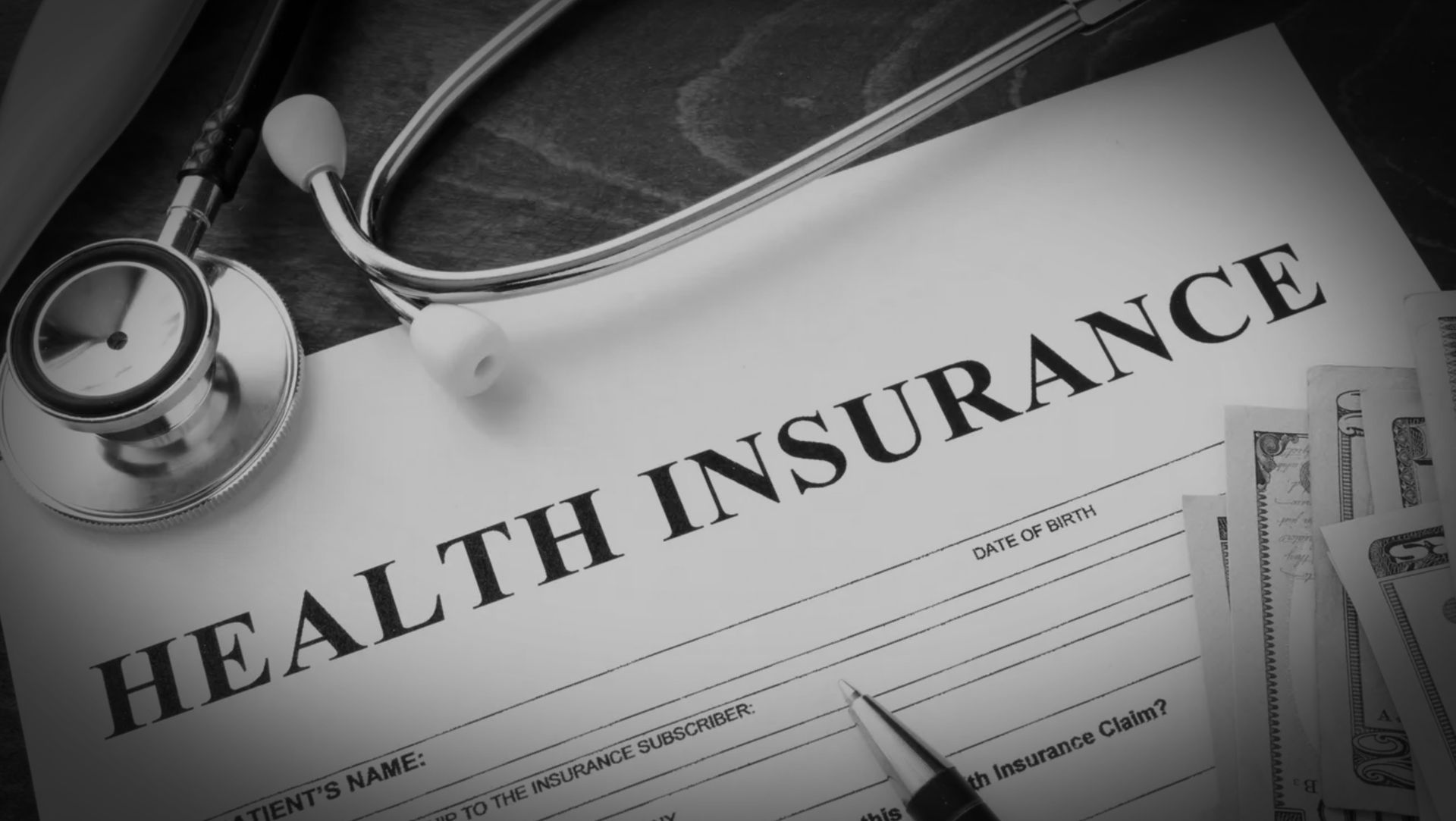27 FAQS about changes the CARES Act made to taxes in 2020
October 23, 2020
27 FAQS about changes the CARES Act made to taxes in 2020
Author: | Publish Date: October 23, 2020

27 FAQS about changes the CARES Act made to taxes in 2020
The Coronavirus Aid, Relief, and Economic Security (CARES) Act is a $2.3 trillion relief bill that was instituted to stabilize the economy and prevent Americans from suffering financial distress following the coronavirus pandemic. The CARES Act provides payments to individuals, forgivable loans to small businesses, penalty-free retirement distributions for those who need them, and tax relief for many individuals. Read on to learn more about how the CARES Act may affect your taxes this year.
Download a printable version of this article
1. WHAT TAX RELIEF DOES THE CARES ACT PROVIDE?
The CARES Act provides a variety of tax relief options for individuals and businesses to help ease the financial burden caused by the global pandemic. A variety of measures were put in place to eliminate certain payments of taxes, fees, and penalties and to defer payments. Tax relief provisions in the CARES Act include:
• Postponed tax filing and payment deadline for income taxes.
• Deferral of employer-side Social Security taxes and self-employment taxes.
• Refundable payroll tax credit of up to 50% per employee.
• Recovery rebate payments to individuals and families.
• Eliminated penalties on qualified retirement plan distributions made in 2020.
• Eliminated required minimum distributions from retirement accounts in 2020.
• Increased interest deduction.
• Increased charitable tax deduction.
• Increased business loss deduction cap.
• Waiver of certain excise taxes.
2. WHAT IS THE DEADLINE TO FILE INCOME TAXES?
The federal income tax filing deadline has been delayed until July 15, 2020, three months after the original deadline date. People will have an extra three months to file their taxes. Additionally, this change gives people an extra three months to pay their taxes without incurring any extra interest or penalties. This change applies to federal income taxes. Many states have passed similar rules that have delayed state income tax returns to the new federal deadline. However, some states are still requiring individuals and businesses to pay any taxes owed based on the previous deadline of April 15, 2020.
3. SHOULD I WAIT TO FILE MY TAXES?
Whether or not you should wait to file your taxes depends on several factors, such as whether your recovery rebate may be impacted negatively if you file now, whether you expect to receive a refund or owe taxes, and whether you have other financial issues to consider.
4. WHAT ARE THE RECOVERY REBATES?
The recovery rebates or economic impact payments are refundable tax credits that most eligible people are receiving through a direct deposit or paper check to help stimulate the economy. They are technically tax credits for the 2020 taxable year, but they are being advanced to people now to help offset the negative financial effects of the coronavirus pandemic. The recovery rebates are up to $1,200 for single tax filers or $2,400 for married couples. Another $500 per dependent child age 16 or younger is also available.
5. WILL I RECEIVE AN ECONOMIC STIMULUS CHECK?
A person’s adjusted gross income for the tax year 2019 is used to determine eligibility for the recovery rebate. If the person did not file a 2019 tax return, his or her 2018 adjusted gross income on his or her 2018 tax return is used. To be eligible for an economic stimulus check, you must meet the following guidelines:
• You filed a 2018 or 2019 income tax return if you were required to do so.
• Your adjusted gross income does not exceed the threshold.
• You have a valid Social Security number. To receive your rebate by direct deposit, the IRS needs to have your current bank account infor-mation. If you used the same bank to direct deposit your tax refund in 2019 or 2018, the IRS will already have this information and you will not need to take any further action. If you did not file taxes for these years or did not receive a refund and are otherwise eligible (such as if you had a low income or receive Social Security benefits), you will need to update the IRS with your current bank account information on the IRS website. Even if the IRS technically has your bank account information because you are on a tax repayment plan with the agency, you will still need to provide bank account information and authorize the deposit of funds into your account. If you have moved since your last income tax return filing and anticipate receiving a paper check, update the IRS with your current mailing address.
6. HOW MUCH WILL MY RECOVERY REBATE BE?
The maximum recovery rebate for individual filers with income up to $75,000 is $1,200. The maxi-mum recovery rebate for head of household filers with income up to $112,500 for head of household filers is $1,200. The maximum recovery rebate for married filers is $2,400 for a couple with income up to $150,000. For any of these above situations, a person can also receive $500 per dependent child under the age of 16. There is no maximum number of children. The recovery rebate amount begins to phase out after filers meet the incomes described above. The rebate is phased out once filers reach the following thresholds:
• $99,000 for individual filers
• $146,500 for head of household filers with one child
• $198,000 for married filers with no children
• $218,000 for married filers with two children The credit phases out at a rate of 5% of your adjusted gross income over the threshold amounts for every $1,000 above this amount. Therefore, the amount of your rebate is reduced by $50 for every $1,000 you make above the threshold.
7. WHEN WILL I RECEIVE MY REBATE?
Millions of Americans have already received their rebates. Millions more were notified that their paper checks would be mailed beginning April 24, 2020. However, it is anticipated that it will take several more months before all of the rebates are delivered. The paper checks will be mailed out in order of adjusted gross income from lowest to highest, so people with lower incomes will receive their checks faster than those with higher incomes.
8. CAN I FILE TAXES NOW TO RECEIVE MY REBATE?
Yes. If you have not filed taxes in 2018, you can file taxes now to make yourself eligible for the rebate. The IRS encourages you to do so.
9. WHICH PARENT RECEIVES THE DEPENDENT REBATE AMOUNT?
If parents are divorced or were never married, the parent who claims the child on his or her tax return will receive the dependent rebate amount.
10. WILL THE ECONOMIC STIMULUS CHECK BE TAXED ON MY TAX RETURN NEXT YEAR?
No. Your tax refund will not be reduced by the amount of your economic stimulus check next year. The payment is technically a 2020 tax credit. It is just advanced to you sooner so that you can use it sooner.
11. WHAT IF MY INCOME INCREASES IN 2020 AND I RECEIVE A REBATE FOR MY 2018 OR 2019 INCOME?
If your income increases in 2020 so that it exceeds the maximum income limit, you can still receive your recovery rebate based on your 2019 or 2018 adjusted gross income. You will not be required to pay back the rebate when you file your 2020 income tax return.
12. WHEN DO EMPLOYERS HAVE TO PAY THE EMPLOYER-SIDE LIABILITY OF FEDERAL SOCIAL SECURITY TAXES UNDER THE CARES ACT?
Most employers are required to take out 6.2% of an employee’s gross wages for Social Security taxes. Employees must also pay a portion of these taxes from their remaining wages. Employers are typically required to submit these withdrawn amounts to the government. However, the CARES Act allows employers to defer payments of their employer-side Social Security tax. Fifty percent of their liability can be deferred until Dec. 31, 2021. The remaining balance must be paid by Dec. 31, 2022. This option is available without any penalty as long as the amounts are paid by the deadlines listed above. However, the option is not available if the employer received a forgivable loan from the Small Business Administration or the US Treasury Program Management Authority. All employers other than those who received a forgivable loan are eligible for the deferral. Additionally, employers who have received a Paycheck Protection Program loan that has not been forgiven can defer the payment of these taxes until the date it receives notice the loan is forgiven and will not incur penalties for failure to deposit or pay. The amounts that had already been deferred are subject to the same payment dates as other deferred payments.
13. CAN SELF-EMPLOYMENT TAXES BE DEFERRED?
Like with the employer-side Social Security taxes, self-employment taxes on net earnings can also be deferred so that 50% is paid by Dec. 31, 2020 and 50% is paid by Dec. 31, 2022. As long as payments are made according to this schedule, self-employed individuals will not face a failure to deposit or pay penalty.
14. WHICH EMPLOYERS CAN RECEIVE A 50% PAYROLL TAX CREDIT?
The CARES Act provides a credit for eligible employers equal to 50% of qualified wages. Eligible employers include:
• Employers in business in 2020.
• Employers whose business operation is fully or partially suspended due to COVID-19 govern-ment shelter-in-place orders or whose gross receipts declined by 50% or more from the same quarter last year because of the COVID-19 pandemic. The refundable credit for each employee is 50% of the employee’s qualified wages, subject to a maximum of $10,000, which can result in a credit of $5,000 per employee. Employers with more than 100 employees can claim the credit for employees who were retained but are unable to cur-rently work because of the crisis. Employers with 100 or fewer employees can claim the credit for all employees.
15. IF AN EMPLOYER RECEIVES A LOAN FROM THE PAYCHECK PROTECTION PROGRAM, CAN IT TAKE THE PAYROLL TAX CREDIT?
No. If an employer receives a Paycheck Protection Program loan, it cannot take the 50% payroll tax credit.
16. HOW ARE NET OPERATING LOSSES TREATED UNDER THE CARES ACT?
The IRS has issued guidance on tax relief for businesses, individuals, trusts, and estates with net operating losses. These relief measures include:
• The carryback period of net operating losses that occurred between Dec. 31, 2017 and Dec. 31, 2020 is waived.
• Certain forms of foreign income that are usually subject to transition tax are disregarded as income during the five-year carryback period.
• Businesses are given the option to waive, reduce, or revoke an election to waive a carryback period for taxable years that began before Jan. 1, 2018 and ended after Dec. 31, 2017.
• Businesses are given a six-month extension to file for a carryback of a net operating loss that ended on or before June 30, 2019.
17. WHAT ABOUT TAX CREDIT CARRYFORWARD AND ALTERNATIVE MINIMUM TAX LIABILITY AFFECT ME?
Businesses that have liability for tax credit carryforwards and alternative minimum tax can make claims for larger refundable tax credits than they would have been able to before passage of the CARES Act.
18. ARE ANY EXCISE TAXES WAIVED UNDER THE CARES ACT?
Excise tax for alcohol used to make hand sanitizer is waived for the 2020 tax year. Aviation excise taxes are also waived until Jan. 1, 2021.
19. HOW DOES THE CARES ACT AFFECT DEDUCTIONS FOR CHARITABLE GIFTS?
The CARES Act modified charitable gift tax deductions in three main ways:
1. There is now an above-the-line charitable gift tax deduction of $300 for cash donations that you can claim even if you do not itemize your deductions.
2. You can make a qualified charitable distribution of $100,000 or less from your IRA in 2020 to a qualified charity and it will not be treated as taxable income.
3. The limits on charitable contributions have now been raised. Typically, the individual limit for filers who itemize their deductions is 60% of their adjusted gross income. This is now 100% of AGI. Corporations’ charitable contribution limits have also been increased from 10% of their taxable income to 25% of their taxable income.
20. WHAT IS THE EXPANSION OF THE INTEREST DEDUCTION?
The net interest deduction limitation typically limits the ability of a business to deduct interest paid on its tax returns to 30% of earnings before interest, tax, depreciation, and amortization. However, this has been adjusted to 50% for 2019 and 2020.
21. HOW IS THE BUSINESS LOSS DEDUCTION CAP AFFECTED?
Pass-through entities, sole proprietors, and other non-corporate taxpayers will not be subject to the limits on the deductibility of excess losses mandated in the Tax Cuts and Jobs Act for tax years from 2018 to 2020. This will allow businesses to amend their previous returns and potentially receive refunds by claiming these full deductions.
22. DO I HAVE TO TAKE REQUIRED MINIMUM DISTRIBUTIONS FROM MY RETIREMENT ACCOUNTS IN 2020?
No. You do not have to take RMDs in 2020 under the CARES Act. If you already received an RMD, you may be able to repay it to your plan without being taxed on the RMD.
23. WILL I OWE TAXES OR PENALTIES ON A DISTRIBUTION FROM MY RETIREMENT PL AN UNDER THE CARES ACT?
If you are under age 59 and one-half, you can take a distribution from your retirement plan under the CARES Act without paying a 10% early withdrawal penalty or 20% mandatory income withhold-ing fee if you meet one of the following conditions:
• You or your spouse was diagnosed with COVID-19.
• You have suffered financially because of the COVID-19 pandemic, such as being laid off or having reduced hours. You can recontribute your funds to your plan within the next three years if you would like to, regardless of the year’s contribution limit. Whether you will be taxed on your distribution depends on whether you were taxed on the money you contributed to your account. You will be taxed on earnings.
24. HOW DOES THE CARES ACT AFFECT QUALIFIED MEDICAL EXPENSES?
Funds can be withdrawn tax-free from Health Savings Accounts (HSAs), Flex Spending Accounts (FSAs), and Health Reimbursement Arrangements (HRAs) to pay for qualified medical expenses. Expenses for over the counter medication are now qualified medical expenses. The CARES Act eliminates the restriction that only prescription medications qualify. Payments for menstrual care products are also qualified medical expenses.
25. ARE UNEMPLOYMENT BENEFITS TAXABLE?
Yes. Unemployment benefits are taxable and will continue to be taxable. The CARES Act grants $600 in weekly unemployment benefits to recipients in addition to the normal benefit. These extra funds are also subject to tax.
26. ARE STUDENT LOAN PAYMENTS THAT MY EMPLOYER PAYS CONSIDERED PART OF MY TAXABLE INCOME?
No. The CARES Act allows employers to contribute a maximum of $5,250 on an annual basis to repay an employee’s student loans. This contribution is tax-free to the employee and can be made to the student loan servicer or directly to the employee. The provision applies to student loan payments the employer made after the CARES Act was enacted and until Dec. 31, 2020.
27. WHERE CAN I FIND OUT MORE?
The CARES Act is a large bill that contains various provisions that may affect your tax situation. Speak to your tax adviser or a tax attorney to learn how these recent changes may affect you and to receive tax planning advice.

The Importance of Changing Passwords: Enhancing Security Amidst Inconvenience In today's digital age, where our lives are increasingly intertwined with technology, the security of our personal information is paramount. One of the simplest yet most effective measures we can take to protect ourselves online is regularly changing our passwords. While this practice may seem inconvenient at times, its significance cannot be overstated. Why Change Passwords? Passwords are the first line of defense against unauthorized access to our accounts, whether it's our email, social media profiles, online banking, or other sensitive information. Over time, however, passwords can become compromised due to various factors: 1. Data Breaches: Large-scale breaches happen frequently, exposing millions of passwords to cybercriminals. 2. Phishing Attacks: Deceptive attempts to trick users into revealing their passwords are increasingly sophisticated. 3. Weak Passwords: Passwords that are easy to guess or reuse across multiple accounts are vulnerable. Regularly changing passwords mitigates these risks by reducing the window of opportunity for attackers to use compromised credentials. Even if your password hasn’t been directly exposed, changing it periodically adds an extra layer of security. Best Practices for Strong Passwords When updating passwords, it’s crucial to adhere to best practices to maximize security: • Complexity: Use a mix of uppercase letters, lowercase letters, numbers, and special characters. • Length: Aim for a minimum of 12 characters; longer passwords are generally more secure. • Uniqueness: Avoid using the same password across multiple accounts to prevent a single breach compromising all your accounts. • Avoid Personal Information: Refrain from using easily guessable information like birthdates or pet names. Managing the Inconvenience Despite understanding the importance of changing passwords, many users find it inconvenient. Here are some tips to manage this process effectively: • Password Managers: These tools securely store and generate passwords, making it easier to maintain unique and strong passwords across accounts. • Set Reminders: Use calendar reminders or built-in features of password managers to prompt regular password updates. • Two-Factor Authentication (2FA): Enable 2FA wherever possible to add an extra layer of security beyond passwords. The Bottom Line While changing passwords might seem like a hassle, it’s a small inconvenience compared to the potential consequences of a security breach. By doing so, you’re actively taking control of your online safety and reducing the risk of falling victim to cyberattacks. Whether you’re protecting personal information or sensitive business data, regular password changes are a crucial step in safeguarding against cyber threats.

Is it love, or is it a scam: Navigating the Perils of Romance Scams In today’s digital age, finding love online has become increasingly common. Dating apps, social media platforms, and matchmaking websites offer convenient avenues to connect with potential partners worldwide. However, amidst the possibilities of romance lie lurking dangers—romance scams. These fraudulent schemes prey on individuals seeking companionship, exploiting their emotions and trust for financial gain. The Rise of Romance Scams Romance scams have surged in recent years, fueled by the proliferation of online dating and social media. According to the Federal Trade Commission (FTC), Americans reported losing a staggering $547 million to romance scams in 2020 alone. Since then, those numbers have only continued to rise. How Do Romance Scams Work? Typically, romance scammers create fake profiles on dating sites or social media platforms, portraying themselves as sincere and attractive individuals. They invest time in building a relationship with their victims, showering them with affection and attention to foster a sense of intimacy. Once trust is established, the scammer often fabricates a crisis—a sudden illness, a financial emergency, or a need to visit the victim—which requires money to resolve. Warning Signs to Look Out For Recognizing the signs of a romance scam can prevent devastating financial and emotional losses: 1. Too Good to Be True: Scammers often present themselves as ideal partners, displaying an unnaturally perfect profile. 2. Quick Professions of Love: Declarations of love or intense emotions early in the relationship may indicate manipulation. 3. Requests for Money: Be wary of sudden requests for financial assistance, especially if the person has not met you in person. 4. Inconsistencies in Stories: Pay attention to inconsistencies in their background or details that don’t add up over time. Protecting Yourself Against Romance Scams 1. Verify Identity: Use reverse image searches or request video calls to verify the person's identity. 2. Guard Personal Information: Limit the amount of personal information shared online, especially financial details. 3. Remain Cautious: No matter the trust level that has been established, always question unusual requests for money or assistance, especially if the person claims it’s urgent. 4. Report Suspicious Activity: If you suspect a scam, report it to the platform where you met the individual and to authorities like the FTC or local law enforcement.

Long warm-weather seasons and the abundance of beautiful lakes naturally make recreational boating a popular pastime on area lakes. Sadly, each year tallies thousands of boating accidents and hundreds of fatalities, statistics that are inevitably increased due to impaired vessel operators. Needless to say, other factors influence boating accidents, but it is safe to say none of them listed here is more easily avoidable, or in the operator's full control than operating a watercraft under the influence of alcohol or drugs. Here are some important reminders of how to keep yourself and your loved ones safe while boating. WHY ARE BOATING ACCIDENTS SO DANGEROUS? Unlike an accident on dry land, emergency medical assistance is not readily available on the water. And, if the boat operator is injured, there may not be anyone else who can summon help or drive the boat to shore. In addition, drowning is the cause of an overwhelming majority of boating accident fatalities (79%). When a vessel operator or passenger goes into the water as the result of a crash, it is unlikely that help will arrive in time to save them. Knowing that many of these deaths could have been prevented if the victims had worn life jackets makes the statistics even more tragic. WHAT ARE THE MOST COMMON CAUSES OF BOATING ACCIDENTS? The U.S. Coast Guard identifies the following top 10 causes of recreational boating accidents: Alcohol use (by boat drivers and passengers) Operating a watercraft under the influence of alcohol or drugs is dangerous AND illegal. Alabama boating laws state that "No person shall drive or be in actual physical control of a vessel or manipulate any water skis, aquaplane, or any other marine transportation device while: there is 0.08% or more by weight of alcohol in the blood. (BAL) under the influence of alcohol. under the influence of a controlled substance. under the combined influence of alcohol and a controlled substance. under the influence of any substance that impairs the mental or physical faculties of the person. Refusal to submit to a field breath test or other approved testing shall result in the same punishment as provided for operators of motor vehicles on the state highways (automatic suspension of vessel license). Operator inattention Many accidents are caused by a distracted operator who fails to notice an oncoming vessel, sudden squall, swimmers, or other impending danger. Improper lookout For decades best-practice guidelines have recommended a second individual be assigned the role of "spotter" in recreational boating. The spotter's role is to be an extra lookout for swimmers or other potential hazards so the vessel operator can focus solely on controlling the vessel. Like a distracted boat driver, a designated lookout person who is not paying attention may inadvertently cause an accident by failing to warn the operator about potential hazards. Lack of operator instruction and experience Some data shows as much as 70% of boating fatalities occur on boats where the operator had not received proper boating safety instructions. In contrast, fatal accidents involving operators who had earned nationally-approved boating safety education certificates typically make up less than 20% of annual fatality totals. Experience as a boat operator can be harder to gain as recreational boating does not usually occur on a daily basis. Excessive speed Just like on public highways, speeding is a major cause of serious boating accidents. In fact, driving a boat at high speed can be more dangerous than speeding in a car because it takes more time to stop or change direction in order to avoid a crash Machinery or equipment failure A defective part or equipment malfunction can cause a serious accident. This could be caused by poor maintenance or a flaw in the design or manufacture of the vessel or equipment. Navigation rules violation Being unfamiliar with the rules governing certain lakes and waterways can result in collisions where people are injured or killed. Navigational laws can vary, even within the same state, so it’s wise to become familiar with the rules for each destination. Hazardous weather conditions Weather can change rapidly, especially in large bodies of water. Even if the weather is fair at the beginning of a ride, boat operators should monitor weather reports throughout the trip and watch for changing conditions. Rough water due to currents or tidal flow Sudden shifts in the current or tide can result in rough and hard-to-navigate waters, particularly for smaller boats. Therefore, operators should be extra cautious when entering areas that are known for these conditions. Force of wave/wake When the hull of a boat moves through the water, it creates waves that are known as a wake. Depending on the size and speed of the boat, these waves can be quite strong. In addition, a wake created by a large boat can cause a smaller boat to capsize or veer into another boat. View the full Alabama boating laws page online

Telephone Scams and Mail Fraud have been around for a long time, with bad actors attempting to take advantage of innocent and vulnerable people. When email became common in our society, it didn't take the bad guys long to adapt their tactics and modern culture called these new forms of email attacks "Phishing Scams." Now, more than ever, modern smartphones allow business to be conducted by text and it is not surprising that scammers are once again targeting this new technology. The common goal of all of these attacks is to steal money from unsuspecting victims. The technical name for what most of us call a text message is SMS, which stands for "Short Message Service." Combining this new acronym with the now common email Phishing Scam gives us "Smishing Scams," yet another threatening term those of us doing business on our phones need to be alert to. Like phishing emails, smishing texts are social-engineering scams that aim to manipulate people into turning over sensitive data such as Social Security numbers, credit card numbers, and account passwords or providing access to a business computer system. They rely on persuading you that the sender is a familiar or trusted source and that urgent action is needed to secure a benefit, resolve a problem, or avert a threat. They might come from a mobile provider, or a service like Netflix or PayPal , claiming your account has expired or been locked, and you need to provide personal information or click on a link to reactivate it. That gives the scammers the means to steal your money or identity or to infect your device with malware. Bogus bank fraud warnings were the most common type of text-based scams reported to the Federal Trade Commission (FTC) in 2022 — up nearly 20-fold since 2019. These texts will often appear to be from major banks like Wells Fargo or Bank of America, with urgent messages for customers to verify a transaction, according to the agency. Also extremely common: fake delivery-related text messages , purportedly from the likes of Amazon, FedEx, or the U.S. Postal Service about an impending package or a shipment snafu . You may be sent to a website, where you’re asked to verify your address and perhaps pay a small “redelivery fee.” But variations abound. A scam text might say you've won a lottery prize or a gift card , or promise a break on break on student loan debt . It could look like an alert from a government agency such as Social Security or the IRS or a link to a phony invoice or cancellation notice for a product or service you supposedly bought. WARNING SIGNS YOU CAN LEARN TO SPOT: A text message requests personal information, such as your Social Security number or an online account password. The message asks you to click a link to resolve a problem, win a prize, or access a service. The message claims to be from a government agency. Government bodies seldom initiate contact with someone by phone or text, according to the Federal Communications Commission (FCC). WHAT CAN YOU DO TO HELP PROTECT YOURSELF AND YOUR FAMILY? Consider using tools that filter or block unwanted messages or unknown senders: Your mobile device may have built-in spam protection. Check the settings on its messaging app. Most major wireless carriers offer call-blocking services . Some call-blocking apps (see “More resources” below) also filter out junk texts. Don’t reply, even if the message says you can “text STOP” to avoid more messages. That tells the scammer or spammer your number is active and can be sold to other bad actors. Don’t assume a text is legitimate because it comes from a familiar phone number or area code. Spammers use caller ID spoofing to make it appear the text is from a trusted or local source. Never click on links in suspicious texts. They could install malware on your device or take you to a site that does the same. Contact the company or organization that supposedly sent the text, using a phone number or website you know to be legitimate, if you think it might concern a genuine problem.

The period between Memorial Day and Labor Day is historically the most dangerous time of year for teen drivers. Some research shows up to 30% of all teen driving fatalities occur during the summer months. Teen drivers lack experience, and the summer months provide multiple reasons for increased risk. Not only is there more daylight and warmer weather, but most teens are out of school and have more free time to be behind the wheel. Here are five safety tips for your teen driver to practice, not just in the summer months but all year long. 1. Avoid Distraction . Research shows as high as 60% of all teen vehicle crashes involve driver distraction. One common misconception is that cell phones are the number one cause of distraction for teen drivers but that is actually not the case. Other passengers create more distractions for teen drivers than any other source. 2. Buckle Up . It is discussed so often that it may seem trite but seatbelt use is proven to reduce fatality rates in motor vehicle accidents. but data shows buckling up can reduce the risk of fatal injury by as much as 45%. 3. Impaired Driving . As high as 15% of all teen driving fatalities involve a blood alcohol content of more than twice the legal limit. 4. Limit Passengers. Most states, including Alabama, have graduated license laws restricting the number of passengers in vehicles operated by teen drivers. Literally all available data associates fewer passengers with lower fatality rates in motor vehicle accidents involving teen drivers. 5. Reduce Nighttime Driving. The fatal crash rate of 16-19-year-olds is nearly 400 times higher at night than during the day.

Identity theft affects millions of people each year and can cause serious harm. Protect yourself by securing your personal information, understanding the threat of identity theft, and exercising caution. Here are 10 things you can start doing now to protect yourself and your loved ones from identity theft: Protect your Social Security number by keeping your Social Security card in a safe place at home. Don’t carry it with you or provide your number unnecessarily. Be careful when you speak with unknown callers. Scammers may mislead you by using legitimate phone numbers or the real names of officials. If they threaten you or make you feel uneasy, hang up. Create strong, unique passwords so others can’t easily access your accounts. Use different passwords for different accounts so if a hacker compromises one account, they can’t access other accounts. Check out the Federal Trade Commission’s password checklist for tips. Never give your personal or financial information in response to an unsolicited call or message, and never post it on social media. Shred paper documents that contain personal information, like your name, birth date, and Social Security number. Protect your mobile device from unauthorized access by securing it with a PIN, adding a fingerprinting feature, or using facial recognition. You can also add a password and adjust the time before your screen automatically locks. Regularly check your financial accounts for suspicious transactions. You can also request and check a free credit report from each of the three credit bureaus every year: TransUnion , Equifax , and Experian . Avoid internet threats by installing and maintaining strong anti-virus software on all your devices—including your mobile device and personal computer. Use a virtual private network (VPN) to stay safe on public Wi-Fi. Do not perform certain activities that involve sensitive data, like online shopping and banking, on public Wi-Fi networks. Protect yourself on social media by customizing your security settings and deleting accounts you no longer use. Also, double-check suspicious messages from your contacts, as hackers may create fake accounts of people you know. Never click on any link sent via unsolicited email or text message—type in the web address yourself. Only provide information on secure websites.

Every accident case is different. Some settle more quickly than others. However, it is not uncommon, for a personal injury case to take a year or more to resolve after the case has been filed in court. Evaluating the Injury Prior to filing a lawsuit, it takes time to determine the full extent of your injuries. Doctors are often unable to give an opinion about the seriousness of an injury until your condition has stabilized. In serious injury cases, it may even take a year after the accident before your doctor can say whether or not your injuries are permanent. It is extremely important to take the necessary time to fully evaluate your injuries. You have only one chance to prove the extent to which you have been harmed. Once you accept a settlement offer, that decision is final. You cannot go back and ask for more money if you later find out your injuries are more serious. An experienced personal injury attorney knows how to keep your case moving through the legal system. Your personal injury case may move through these stages: 1. Written Discovery The written discovery period can last over six months. You will be asked to answer written questions (interrogatories) under oath. You will also be asked to produce documents or authorize others to produce documents such as accident reports and medical records. 2. Depositions During a deposition, you will be asked questions under oath. A court reporter types a record of everything that is said. Not only will you be questioned about the accident and your injuries, you will be asked questions about what your health, education, and work were like before the accident. 3. Mediation and Settlement The Court almost always requires a settlement conference or mediation before personal injury cases can go to trial. At mediation, a neutral trained mediator goes over the issues and evidence with the parties to help guide them toward a settlement agreement. 4. Trial If your case does not settle and goes to trial, a jury decides what your injury is worth. It can take eighteen months or longer to get the trial scheduled. Once the trial is over, there may be further appeals and motions. It's possible for the parties to settle the case during trial or even after trial in order to end an appeal. Your best strategy is to contact an attorney with experience in handling personal injury cases. Your attorney can give you an estimate about the length of time it takes to resolve your type of case. Also, ask your attorney to give you frequent reports on the status of your case so you know that your case is making its way through the legal process. It's understandable that you may be frustrated at the speed your case seems to be moving. However, you should never rush to take the first settlement offer made by an insurance company. The first offer is rarely your best settlement offer. .

Distracted driving has been on the increase for the last several years and continues to be one of the leading causes of vehicle accidents throughout the United States. If you are texting and driving down the highway at 55 mph, that’s like traveling the length of a football field with your eyes closed. You can only drive safely when your full attention is on the road. Any activity that isn’t related to driving is a potential distraction and increases your risk of a collision. While most research points to a mobile phone as the number one culprit, it is far from the only activity potentially stealing a driver's attention. Eating or drinking, grooming, radios, other passengers - especially children, and even pets can also be significant factors. Distracted driving accidents are preventable 99% of the time. Driving can become mundane at times, but we all must remember when driving we have an obligation to the safety of not only ourselves but those who ride with us and other drivers we share the road with. Some studies show listening to podcasts or certain types of music can enhance our concentration. It’s important to practice safe habits behind the wheel. You want to make sure that your passengers know how serious you are about driving without distractions. One of the most effective ways to lead is through example. Be a good example for your friends and family by avoiding driving while you’re distracted.

We see this question all the time. The injured party doesn’t want to use their own health insurance to pay for an injury. They believe it is the responsibility of the person at fault to pay for their medical bills. That may feel like the right position for an accident victim to take but the truth is, most of the time the injured party will end up with a larger settlement if they do, in fact, use their own medical benefits. Here's why; Health insurance companies have a negotiated price for medical services that is about 15 percent less than what people have to pay who don’t have health insurance. If your medical bills are $50,000.00 but Blue Cross Blue Shield pays $15,000.00 and the person who caused the wreck has $50,000.00 in liability coverage, that leaves $35,000.00 available for the injured party versus $0.00. Generally speaking, Blue Cross Blue Shield will reduce the $15,000.00 to $10,000.00 leaving $40,000.00 available. The point is that there’s more money available when you take advantage of your healthcare negotiated rates whether it’s United Health Care, Medicare, Medicaid, or Blue Cross Blue Shield. More money is better. Using your health insurance to pay your medical bills if you are injured, will almost always end up maximizing your settlement.

Once you reach the age of 65 you have many more options than before. As you know if you go on Medicare and you are under the age of 65 your options for health plans are limited. When you turn 65 you will have another open enrollment period to sign up for any plan you wish to get. In other words, just because you are already on Medicare does not prohibit you from having all the options a person not on Medicare and turning 65 would have.